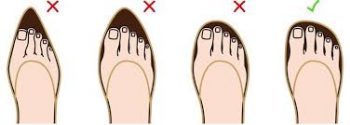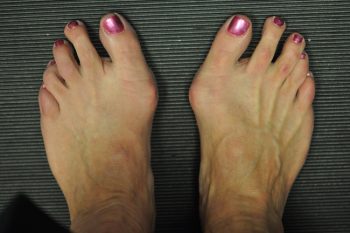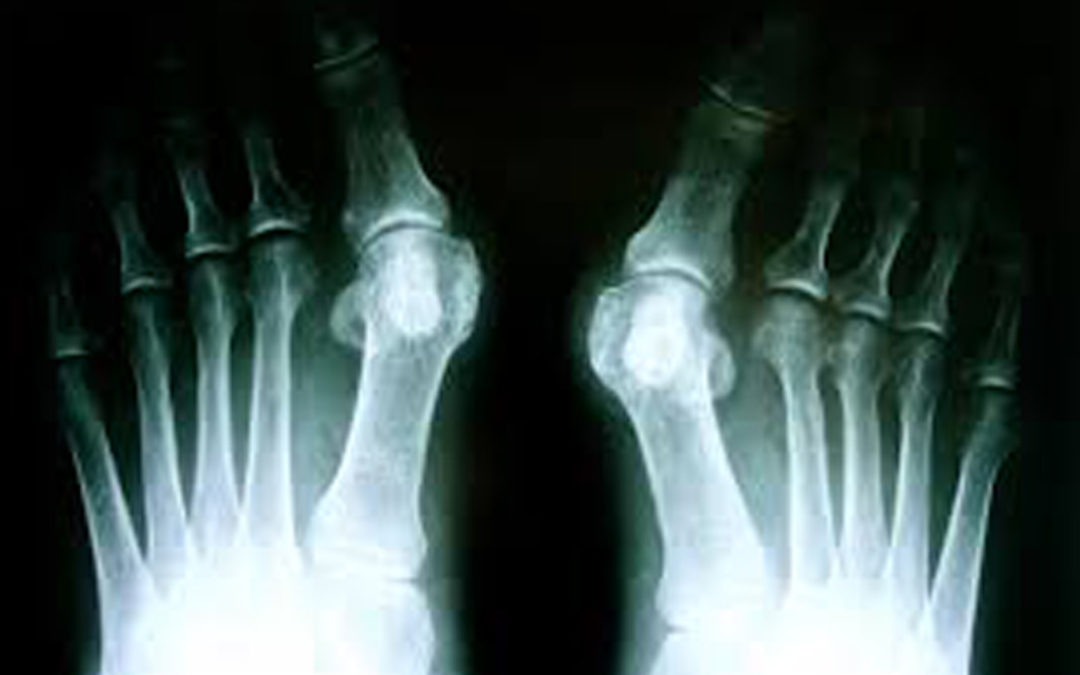Lumpy and sore big toe? Read on as we dissect the Bunion.
What’s a bunion? Well for a start it’s not some mythical creature invading swamps in Australia, that’s a bunyip and they are not real, while bunions are certainly real and often really painful.
Also known as Hallux Valgus, Hallux Abducto Valgus or HAV these painful ‘lumps’ on the side of the 1st metatarsal joint of the big toe, and also in a different form on the side of the 5th toe, are very common and we see the effects of them frequently in masters athletes.
A bunion is a form of progressive foot deformity involving the deviation of the 1st metatarsophalangeal (MTP) joint (see the pictures below) away from its normal ‘anatomical’ position.

Who is most likely to develop a bunion?
– Those with a significant family history
– Women more likely than men
– Adults over the age of 30
What causes a bunion to develop?
Evidence has yet to give us a clear understanding of the exact cause of developing a bunion. From limited evidence and clinical experience, it is believed to be secondary to a number of intrinsic (internal) and extrinsic (external) factors.
Intrinsic Factors:
-Family history
-Long first metatarsal (the main joint that the big toe comes from and the region for bunion development)
-First ray instability (the group of joints that form the full length of the big toe)
-Excessive foot pronation (rolling inwards).
Extrinsic Factors:
-Footwear that is poorly fitting
-Commonly a narrow toe box worn frequently
-Trauma to the supporting structures around the big toe joint
What are the symptoms associated with having a bunion versus just swelling?
Early stages:
-Pain over the “bump” most commonly from footwear pressure
-Build-up of fluid or associated bursa overlying the bony lump
-Joint pain and or stiffness associated with activity
-Callous (hard skin) under the 1st MTP joint or along the inside of the joint
-Difficulty finding footwear with appropriate width
Later stages:
-Symptoms associated with early stages of bunion development, as well as
-Increased arthritic changes of the 1st MTP joint
-Pathology of the 2nd digit due to increased reliance
-More persistent pain at rest and when weight bearing.
What can I do about my bunion?
Conservative Options:
Skin-care:
Management of corns, callouses and diseased nails associated with altered pressure patterns Padding and pressure relieving products to avoid further irritation to bony bumps and lumps associated with bunions
Address biomechanical risk factors:
Footwear advice: Wear shoes that actually fit you! This includes your rowing shoes but also look for daily wear shoes that do not overly restrict movement or put excessive pressure on your toes
Orthoses: Orthotic intervention has not been shown to reduce the deformity present, but can be extremely helpful in reducing the symptoms associated with bunions and preventing further progression of the deformity
Strengthening: prescription of exercises to develop muscles that help optimise function of the first toe. This is a great area to work on because it is free and general foot strength is a factor in many injury prevention research trials. Your foot is full of muscles and they can be worked on like a bicep!
Invasive Options:
If conservative management fails to see an improvement in patient outcomes, more invasive managements are available.
Injection therapy to settle an inflamed joint associated with bunion development
Surgical options:
Bump removal
Correction of the bunion
Correction of the bunion and associated deformities such as clawing of the second toe
We are all for education and for using equipment that supports our movement. Fashion shoes are not always the best fit but we are never really going to stop wearing them at all occasions are we? Be practical, use a shoe that works with you if you are walking to work or vary your shoes during the week. For rowing a shoe that fits is critical for so many injuries, comfort and performance so we need that to change. Lucky the ShoePlate Pro QuickRelease can help with that, already allowing you to use your own shoes in any boat and the erg, and keep your eye out for some new exciting developments from BAT Logic coming soon.



